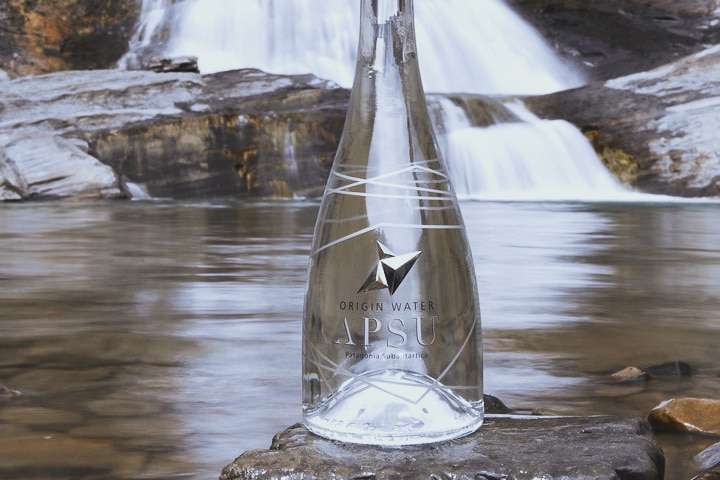One of the founders behind Patagonian bottled water brand Apsu explains why its price tag is so high.
We often ignore the details when it comes to our drinking water. Perhaps we’ll fill a glass from the tap to go alongside a meal, or grab a cheap bottle if we’re on the go and forgot to pack our own.
We may have preferences when it comes to sparkling or still, but rarely pay attention to the nuances of flavor or origin.
Now a generation of water sommeliers is starting to change all that, highlighting the diversity of options, and the range of increasingly luxe brands available.
One of the most fascinating is Apsu, and with a price tag of $140 per 750ml bottle, you might expect it to come with some special credentials.
And it certainly does.
The taste of water
Apsu, which is harvested from the Gran Campo Nevado ice fields in the Sky Ring Sound in Patagonia, was dreamed up by four friends with a passion for the region, as well as deep interest in conservation and environmentalism.
Company co-founder Francesco Giangrandi, who has a background in adventure tourism, opened up to Ethos about his company’s story, and why we should all care more about the water we drink.
“I became a water sommelier three years ago,” he said. “Before coming into this business, I never really thought about the taste of water.
“The experience of having your first tasting is mind-blowing. You don’t realize, but different waters all taste so different.”
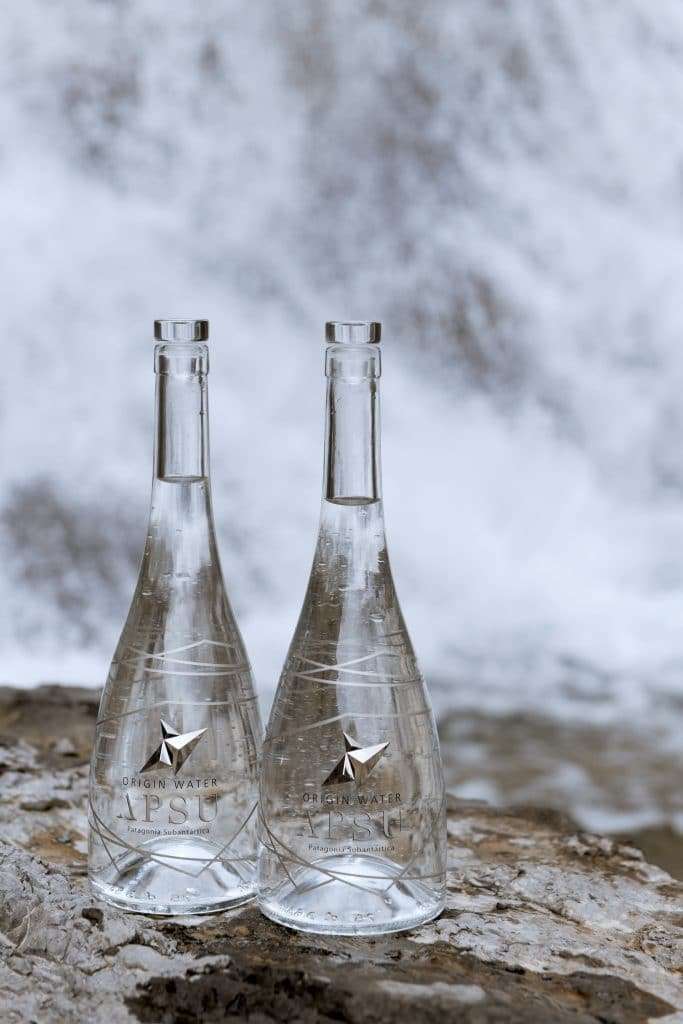
He recommends people organize their own tasting by picking four or five different kinds of water from the store, and sampling them together.
“You’re going to realize right there that they’re super different,” Giangrandi says.
The trick is having a little bit of knowledge of what to buy. Waters with similar origins—for example, all from glaciers, will taste similar. As will those with similar TDS (or Total Dissolved Solids — the amount of organic and inorganic materials dissolved in a specific volume of liquid. These can include minerals, salts, metals, and ions).
“But if you compare artesian [free-flowing spring] water from Europe with glacier water from Patagonia, the difference is mind-blowing.”
Indeed, mind-blowing is one of the words that Francesco regularly uses to describe Apsu, its flavor, story, and purpose.
The cleanest water in the world
Giangrandi and his friends, who have backgrounds in tourism, nature research, and marine biology, entered the water business eight years ago. After years of research into how best to harvest and sanitize their Patagonian water, this year they are finally bottling and selling a batch.
According to Giangrandi, the business bases itself on three pillars, which underpin everything it does, and contribute to its product’s price tag.
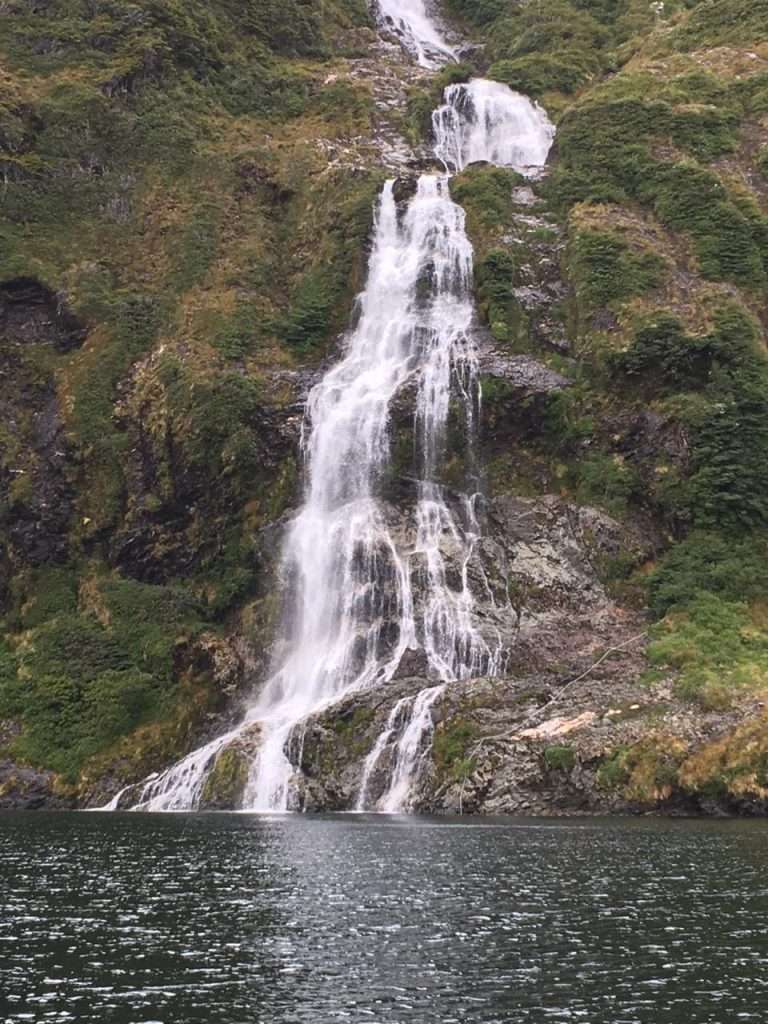
“The first pillar is the quality of the water,” Giangrandi said, citing a University of Texas study which found the Magellanic region of Patagonia hosts some of the cleanest sources of water in the world, free from post-industrial contamination.
“This is clean, clean water,” he explained. “I don’t want to say pure because pure water is distilled water with no minerals, with nothing in it. This has a lot of minerals, it has a lot of nutrients, but no contaminants at all.
“So our main pillar was to get this water, which has this unique quality that is not easy to find anywhere else in the world right now.”
Harvesting and leaving no trace
The second pillar is the company’s harvesting method.
“We want to be sustainable,” Giangrandi said. “So we designed a harvesting system. The whole point is we don’t have any construction on the site where we extract the water.
“We go to the extraction site just one or two days a year, and when we leave, we leave no trace. It’s like we’ve never been there. It is a pristine place, and it’s our intention to maintain it and to keep it that way.”
The quartet is hands-on when it comes to harvesting the water, traveling with a captain who has the requisite local knowledge to navigate their boat to where the extraction site.
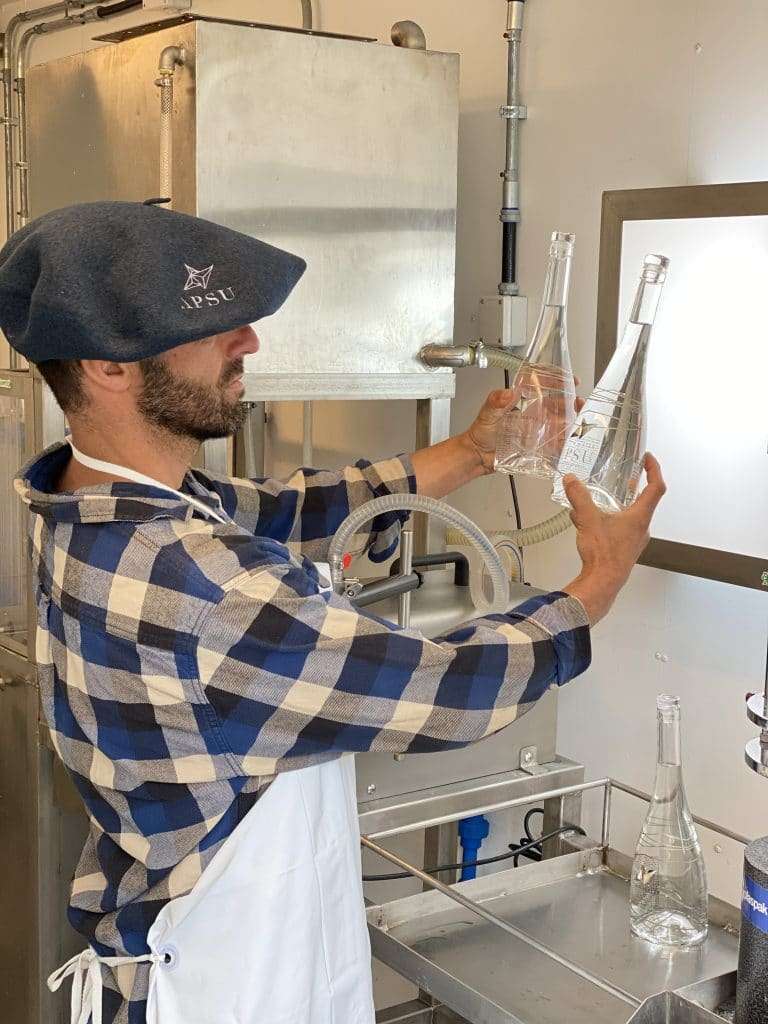
Because of how remote the area is, it is difficult to reach, and weather conditions can get very dangerous.
“It’s not easy to navigate the waters down there. It’s a tricky place and conditions can get ugly really fast,” Giangrandi said.
Because of the difficulties and danger in harvesting, and the efforts the company makes to leave no trace, the amount extracted is minimal.
“We don’t want to have a production of millions and millions and millions of bottles,” he explained.
“We do a very small year-to-year harvest. This year, we’re only doing one. And because of this, we need to put a higher price tag on each bottle.”
Their total annual production will be just 3,600 bottles.
Water for the planet
Finally, the company’s third pillar is its environmental stance.
“We developed this product because we’re looking to raise funds to help different projects in the region. Patagonia is full of national parks and nature, it’s incredible. And there’s a lot of effort being put in to keep it that way,” Giangrandi said.
“So when we decided we were going to harvest and bottle this mind-blowing water, we decided we were going to do it to raise funds for [environmental] projects in the area.”
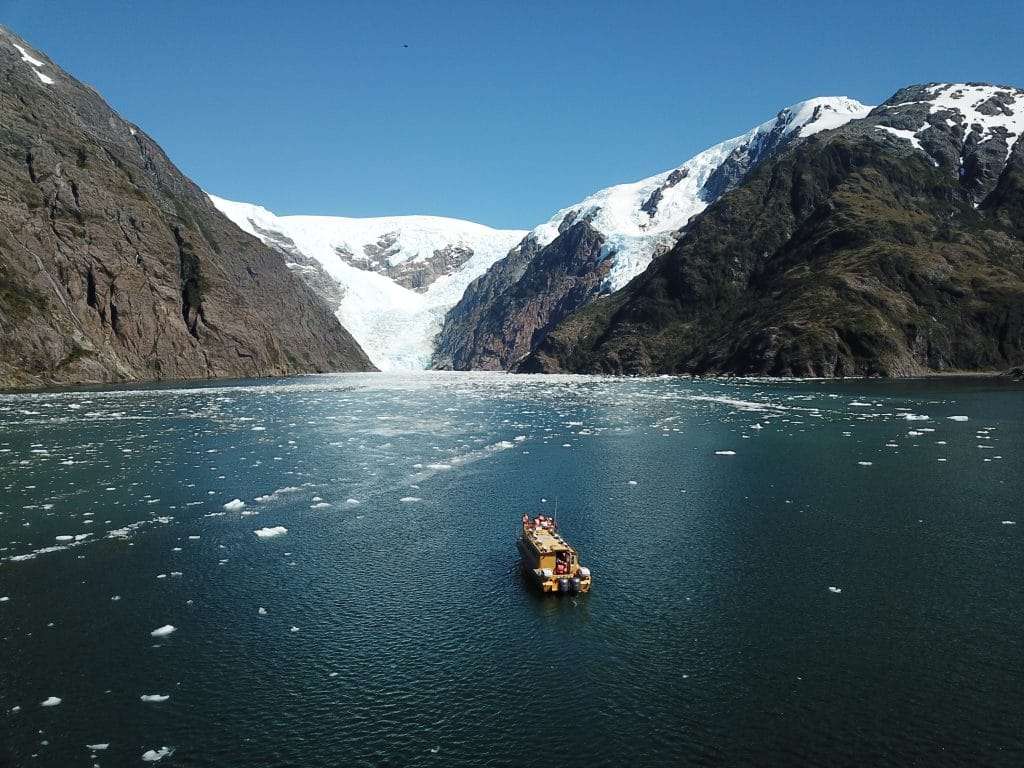
Apsu is currently working with organizations undertaking rehabilitation projects, promoting nature, and eco-friendly initiatives. The partners also plan to fund scientists to come and study the area, so they can develop resources to support the region.
When it comes to preparing the water for sale, once it has been harvested, it has to be sanitized, to ensure it has no bacteria or viruses in it.
Again, this process has been meticulously crafted to maintain the integrity of the water, using a UV filtering system that does not affect its flavor, or remove any minerals. It is then hand bottled, and ready to sell to those who want to enjoy it.
How to drink water
And Giangrandi has advice on how to make the most of his premium product.
“Usually, when you want to taste water, you taste it at room temperature, and you compare it with other waters at the same temperature,” he explained.
“That’s if you really want to go into the details of the flavor.
“But we harvested this water at 4°C (around 39°F) and I suggest people try it at that, because that’s [how cold it is when we] extract it from nature, and it’s completely different than at room temperature.”
While the drink can be enjoyed alone, because it has such a light taste it is very good to pair with food too.
“An awesome pairing is chocolate,” he said. “When you try water with chocolate, it’s quite an experience.”
Who buys $140 water?
According to Giangrandi, Apsu has so far attracted a wide range of clientele, all with their own reasons for purchasing the water.
“Some buy it out of pure curiosity. They want to understand why it is so expensive. Others choose it because of the beautiful bottle, which is really quite something. If people are hosting a high-end reception, they want to have bottles that look good on the table,” Giangrandi said.
For others, it is a matter of taste.
“Just as there are people who like wine, there are water aficionados,” he said. “And they buy different kinds of waters from all over the world.
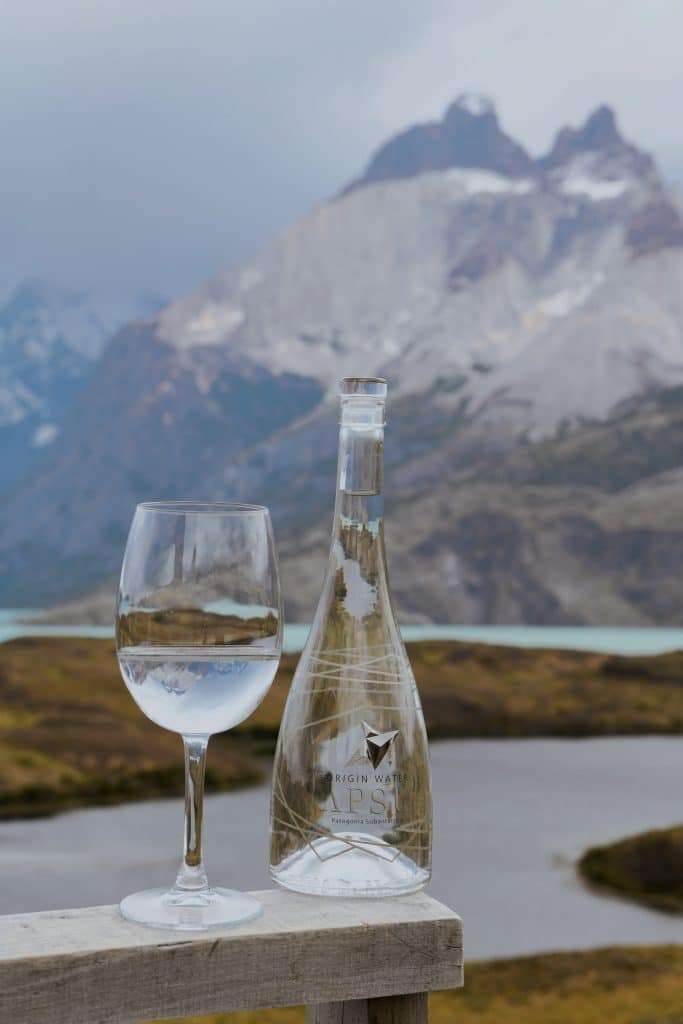
“They do food pairings, instead of doing it with wine or with whisky, many people who don’t drink alcohol are starting to get into the world of water. There are people who like having a bottle to bring status to a table, which is why, when they have Champagne, they don’t have just any champagne, they bring Dom Perignon.
“And when people realize they can do the same thing at their table, or at their parties, or in their business meetings, they will go for it.”
For others, the price tag gets a great conversation going.
“And that’s the whole purpose of taking this water to the world,” Giangrandi said.
“So that we can have a conversation and look for people who have the same passion we do when it comes to taking care of Patagonia.
“It’s beautiful, and we have to do everything we can to make sure this region is here forever. Because it’s mind-blowing.”
Related on Ethos:

